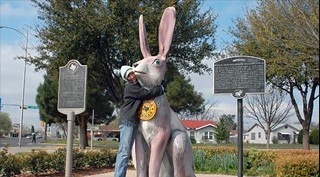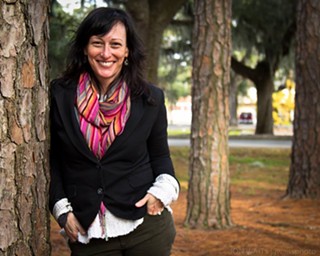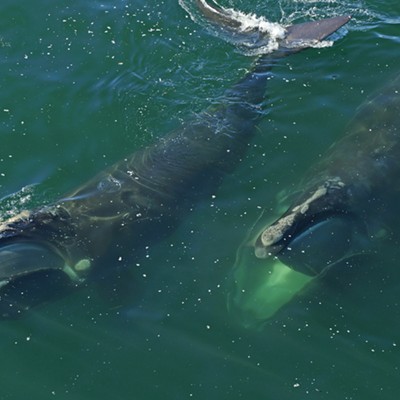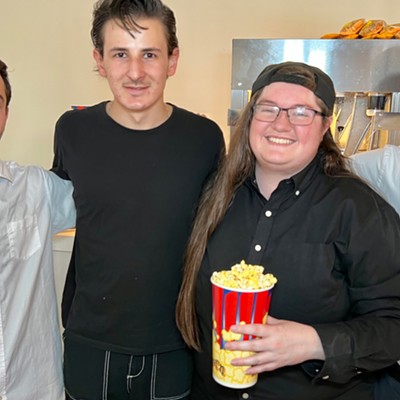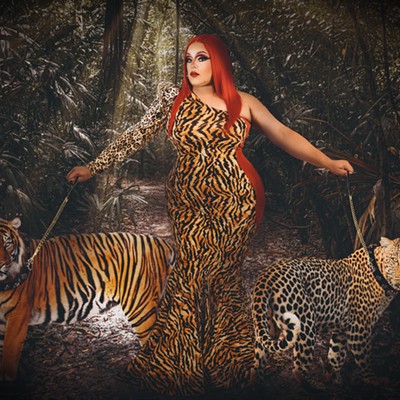There’s nothing like eating pancakes under the udders of the world’s largest fiberglass cow.
At least according to filmmaker Amy Elliot, who visited the giant statue in New Salem, ND, while shooting the documentary World’s Largest.
“The locals put on this whole breakfast up there every year, and it’s fantastic,” said Elliot over the phone from her New York home. “You can see the whole town.”
The colossal cow is one of 58 such small town ginormities featured by Elliot and her co–director Elizabeth Donius, lifelong BFFs who have been collaborating on film and video projects since middle school. The pair hit upon the idea to document the United States’ vast collection of over–sized statues while looking for an excuse for a road trip.
But what was meant to be a kitschy look at Americana quickly turned into a deeper look at small town life.
“We began to spend time in these communities, finding out the stories behind these things instead of snapping a picture and moving on,” said Elliot. “And everywhere we went, we found a similar story.”
The tale goes like this: A town with a relatively stable economy, usually based in industry or agriculture, goes bust when the factory closes or the farms fail. In an effort to draw visitors and their much–needed dollars to local restaurants and other businesses, community leaders erect the “world’s largest” gargantuan apple/watermelon/Paul Bunyan effigy (there are three of the latter vying for the true designation.) For many towns, it’s been a creative and effective plan for revitalization.
“What we have is people repurposing the icons of what sustained them before and rebranding the town into a tourist destination,” explained Elliot. “And for some, it’s really working.”
In some cases, what might repel people is the very thing that brings them in: Take Hildalgo, Texas, the original site where killer Africanized honeybees first crossed into the U.S. from Mexico in 1990. Rather than downplay the location’s history of insect terror, Mayor John Franz used $20K from the city budget to construct the world’s largest killer bee, which now attracts thousands of visitors every year.
Throughout the six years it took to film World’s Largest, Elliot and Donius made several trips to Soap Lake, WA to follow its efforts to transform itself from a depressed “ghost town” to the home to the world’s largest lava lamp. The film uses Soap Lake to focus on the economic and personal need to feel “big,” even if your community is small.
The film is currently making the rounds as part of the Southern Circuit of Independent Film with a screening in Savannah this Thursday, Nov. 17 at the Lucas Theatre. Included in the price of admission is a Q&A session and reception with Elliot, who’s delighted to say more about the world’s largest olive, buffalo and ear of corn.
To inspire interest in the film series, Lucas Theatre Managing Director Meaghan Gerard hit upon the idea of inviting students to create original art to display at the screenings. For World’s Largest, she asked the sixth grade visual arts majors at Esther F. Garrison School of Visual and Performing Arts to paint their own versions of the world’s largest whatevers.
“We showed them the clips and told them they could get as wild as they wanted,” said Walsh.
On a visit to Garrison, it was evident things were getting a little wild judging from the vibrant watercolor paintings of the world’s biggest pair of scissors, Christmas tree, paint palette, waffle and more.
Brianna Thayer, one of the school’s visual arts teachers, has been impressed with how enthusiastic her students have been about the project, especially since it’s been coupled with a lesson in a new technique.
“This is the first time we’ve used watercolors and pen–and–ink in here, and they’re doing really well,” said Thayer as she moved around the room checking lines and offering suggestions. “It’s interesting to see where they placed their objects.”
Leo Meza held up his painting of an enormous UFO: “This is in Roswell, New Mexico. I based if off of War of the Worlds.”
The world’s largest tube of paint, created by Elijah Kenney, stands in a city with an erupting volcano. “I think it’s in Hawaii,” he said.
While the film spotlights the theme of creating a sense of worth for small towns, this project has helped students realize their own role as artists.
“It’s a great way to show the students how to connect their work with the rest of the world,” said Catriona Schaefer, Garrison’s other visual arts teacher. “They get to see how their art can be used.”
The students’ art is currently on display in the lobby of the Lucas and will available to view through the screening.
As for Elliot, she’s already thinking about where to point her camera next. She thinks she’s found another tall topic to tackle: Garbage.
“I’ve been thinking about paying a visit to the largest open dump in North America,” she muses. “How we deal with our waste seems like it needs to be explored.”
Sounds like it could big. Huge, even.
“World’s Largest” screening and filmmaker Q&A
When: At 8 p.m. Thursday, Nov. 17
Where: Lucas Theatre, 32 Abercorn St.
Tickets: $8
Film info: worldslargestdoc.com

